2013 Spring Meeting
Spring meeting WSC 2013
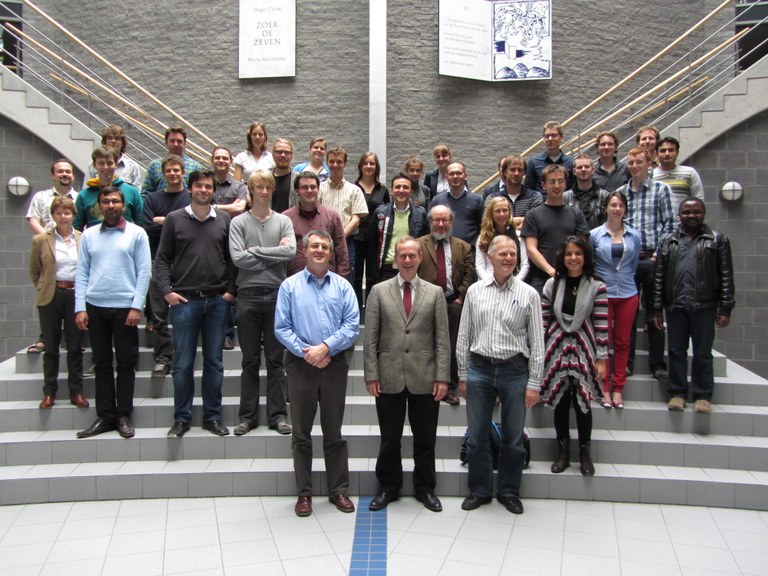
Participants WSC Spring meeting 2012 in Antwerp
Friday May 17-th, 2013, the Werkgemeenschap Scientific Computing is organizing, together with the Centrum Wiskunde & Informatica its yearly spring meeting in Amsterdam. A mixture of nine young and senior researchers have been selected to give a presentation on their research.
The program and the abstracts are shown below. Participation (including lunch) is free of charge but registration is obligatory.
Location
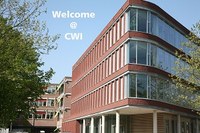
Centrum Wiskunde & Informatica, Science Park 123, 1098 XG Amsterdam
Program
| 09.00-10.00 hours | Registration, coffee/tea |
| 10.00-10.30 hours | Fast time solution of the Maxwell equations by matrix functions[abstract] |
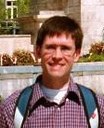 |
Mike Botchev (http://www.math.utwente.nl/~botchevma/) obtained his PhD degree from the Rostov State University (now Southern Federal University, Russia) in 1995. He spent several years at Utrecht University, CWI and FOM Plasma Physics institute "Rijnhuizen" as a postdoctoral researcher and now works at the Applied Math Department, University of Twente. His research interests include efficient time integration methods and linear solvers, preconditioned Krylov subspace methods and numerical solution of the Maxwell equations. |
| 10.30-10.55 hours | Partitioned simulation of fluid-structure interaction [abstract] |
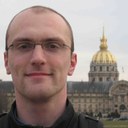 |
Joris Degroote obtained his MSc and PhD degrees at Ghent University (Belgium) in 2006 and 2010, respectively. He was a visiting researcher at MIT (USA) from September 2007 until August 2008 and at TUM (Germany) from July until September 2011. Currently, he is a post-doctoral researcher at the department of Flow, Heat and Combustion Mechanics at Ghent University. His research interests are the development and analysis of coupling schemes for partitioned fluid-structure interaction simulations and their applications to mechanical, civil and biomedical engineering problems. |
| 10.55-11.20 hours | A Monge-Ampère equation in illumination optics [abstract] |
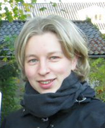 |
Corien Prins (Corien's website) studied physics and mathematics in Groningen and Utrecht. After finishing her master's degree in mathematics, she decided to start a PhD project at the Eindhoven University of Technology on a joint project with Philips Lighting. Currently her research is focused on inverse methods for the design of optics for LED lighting. Next to having a broad education in both mathematics and physics, she is also an enthusiastic programmer. |
| 11.20-11.45 hours | Coffee/tea break |
| 11.45-12.10 hours | Application of the Level-Set Method to a Mixed-Mode Driven Stefan Problem [abstract] |
 |
Dennis den Ouden is PhD Researcher for M2i, located at TU Delft, in cooperation with Tata Steel, Nederland. His research focuses on modelling growth and nucleation of particles within HSLA steels during thermomechanical processing. The research has two main areas of focus. First the evolution of size distributions of particles to obtain global information on the microstructure of the steel. Second the shape evolution of single particles. The results from this project will be (partially) implemented at Tata Steel for validation and use. Dennis den Ouden studied Applied Mathematics at TU Delft. |
| 12.10-12.35 hours | Local Discontinuous Galerkin Method for Inkjet Drop Formation and Motion [abstract] |
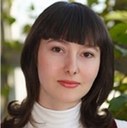 |
Tatyana Medvedeva is a PhD student at the Mathematics of Computational Science (MaCS) group, University of Twente. The title of her research topic is "Local Discontinuous Galerkin Method for Inkjet Drop Formation and Motion". Current research interests include computational mathematics and fluid mechanics. She got her Master's degree at the faculty of Applied Mathematics and Computer Science, Novosibirsk State Technical University (Russia). |
| 12.45-13.45 hours | Lunch at Polder, Science Park 205 |
| 13.45-14.10 hours | Challenges in fluid modeling of streamer discharges [abstract] |
 |
Aram Markosyan(http://www.cwi.nl/~aram) is a PhD student at CWI in Amsterdam. He is in the group of multiscale dynamics under supervision of U. Ebert and W. Hundsdorfer. The main focus of his research is development of new mathematical models for streamer discharges. |
| 14.10-14.35 hours | Pricing American-style options in the Heston model with ADI FD schemes [abstract] |
 |
Tinne Haentjes is currently PhD student in the Applied Mathematics and Numerical Analysis research group at the University of Antwerp. Her research deals with the analysis and development of numerical methods for the efficient and stable solution of higher dimensional partial differential equations arising in financial option pricing theory. The main focus is on Alternating Direction Implicit (ADI) time discretization schemes. |
| 14.35-15.00 hours | Stochastic parameterization of atmospheric convection [abstract] |
 |
Jesse Dorrestijn obtained his bachelor's and master's degrees at the Mathematics at Universiteit Utrecht in the Netherlands, Master with distinction. During his study he spent one year at the department of Mathematics at La Sapienza in Rome in Italy. From 2010 Jesse is a PhD-student at CWI in Amsterdam. He is in the group computational dynamics under supervision of Daan Crommelin. The subject of his research is stochastic parameterization of atmospheric convection. |
| 15.00-15.25 hours | Coffee/tea break |
| 15.25-15.55 hours | Frame Computing: working with redundant representations of functions [abstract] |
 |
Daan Huybrechs studied engineering and finished a phd in applied mathematics on numerical methods for wave problems at KU Leuven in 2006. After a postdoc in Cambridge, he currently holds a research professorship position in Leuven. Frames and approximation theory are a recent research topic, which evolved from earlier work on numerical methods for the evaluation of oscillatory integrals and integral equations. |
| 16.00-16.45 hours | Drinks |
Organisation, participation and registration
Transport
Train
The nearest train station is Amsterdam Science Park. It takes a 10-minutes walk from the station to CWI. The 2nd closest train station is Amstel Station. From there bus 40/240 goes to Science Park, but you can also take a taxi or rent a bicycle at the station.
Directions by car
Take the Ring A10 and exit on 'S113/Watergraafsmeer'. Follow the signs Science Park and turn right into Kruislaan. Drive along about 1 km and go through the railway tunnel. After the tunnel turn the first left onto the Carolina MacGillavrylaan and take the entrance to Science Park at your right. Pass the gate and park your car at the parking lot. You will find the CWI building when you turn right on the first crossing of roads and pass under the bridge. When leaving you can ask the organization a so-called uitrijkaart.
Please see Google Maps as well
Participation (including lunch) is free of charge but registration is obligatory.
Contact
Questions? Please ask: Margreet Nool
Abstracts
Mike Botchev (University Twente)
Fast time solution of the Maxwell equations by matrix functions
Solution of the time dependent Maxwell equations is an important problem arising in many applications ranging from nanophotonics to geoscience and astronomy. The problem is far from trivial, and solutions typically exhibit complicated wave properties as well as damping behavior.
Usually, special staggered time stepping schemes are used. Although their time step may be severely restricted by the CFL condition, performance of these schemes is hard to beat by modern implicit or exponential time integration schemes. We show that in some cases so-called time-stepping-free schemes provide a very efficient alternative to the standard schemes. These schemes employ the matrix exponential function and can be implemented by special block Krylov subspace technigues
[back]
Joris Degroote (University Gent)
Partitioned simulation of fluid-structure interaction
In partitioned fluid-structure interaction (FSI) simulations, a flow solver is coupled with a structural solver. To satisfy the equilibrium of velocity and traction on the interface between the fluid and the structure, coupling iterations need to be performed in every time step. A straightforward approach with fixed-point iterations often does not converge for cases with strong interaction and incompressible fluids. Based on the insights from a stability analysis of these fixed-points iterations, quasi-Newton coupling schemes have been developed. These techniques use both solvers as black-boxes and have successfully been applied to various cases, including adjoint FSI problems. Furthermore, a quasi-Newton iteration scheme can be accelerated by means of reuse, a multi-level approach and a multi-solver approach.
[back]
Corien Prins (TU Eindhoven, Philips)
A Monge-Ampère equation in illumination optics
For a given light source with a known emittance, we want to design a reflector or lens that converts this light into a given target intensity. This inverse problem is governed by conservation of energy, which results in a fully nonlinear elliptic partial differential equation of the Monge-Ampère type.
This equation is known to be difficult to solve numerically. The first difficulty occurs in the discretization of the interior. The solution for the interior is not unique, therefore we need a scheme that enforces the solution to be convex. This is taken care of by a complicated scheme based on a wide stencil. The second difficulty is the boundary condition. The boundary condition is derived from the fact that all the light from the source should be transported to the target area. As a result, the light from the boundary of the source is transported to the boundary of the target. This boundary condition can be reformulated as a Hamilton-Jacobi equation.
We have successfully applied this scheme to design various reflectors and lenses. I will give some example results for reflector design, such as a reflector for street lighting, and a reflector that projects a famous Dutch painting on a wall.
[back]
Dennis den Ouden (TU Delft)
Application of the Level-Set Method to a Mixed-Mode Driven Stefan Problem
This study focuses on the dissolution and growth of small particles within a matrix phase. The dissolution or growth of the particle is assumed to be affected by concentration gradient of one chemical element within the matrix phase at the particle/matrix boundary and by an interface reaction, resulting into a mixed-mode formulation. At the interface two conditions are present for each chemical element, one governs the mass balance at the interface and results into an equation of motion, and another condition describes the reaction at the interface which results into a Robin boundary condition.
The formulated Stefan problem is solved using a level-set method by introducing a time-dependent signed-distance function for which the zero-level contour describes the particle/matrix interface. To ensure the signed-distance property of the level-set function we employ a novel pde-free technique for reinitialization of the level-set function.
Both the convection equation for the signed-distance function and the diffusion equations are discretised by the use of finite-element techniques. The convection equations for evolution of the signed-distance function are solved on a pre-defined grid using a Streamline Upwind Petrov Galerkin finite-element method. The diffusion equations are solved on a part of the pre-defined grid, which is determined by the negative value of the signed-distance function.
Simulations with the implemented methods for the dissolution and growth of various particle shapes show that the methods employed in this study correctly capture the evolution of the particle/matrix interface, especially for non-smooth interfaces and breaking of particles. At later stages of growth and dissolution physical equilibrium is attained. We have also seen that our solutions show mass conservation when we let the time-step and mesh-coarseness tend to zero.
[back]
Tatyana Medvedeva (University Twente)
Local Discontinuous Galerkin Method for Inkjet Drop Formation and Motion
In inkjet printing accurate control of droplet formation is crucial to obtain a high printing quality. In order to investigate this complex process the one-dimensional model proposed by Eggers and Dupont [1] was discretized using a Local Discontinuous Galerkin method. Viscosity and free surface terms are included in this discretization. Since the resulting discrete system is very stiff an implicit time integration method is used in combination with a Newton method.
The newly developed LDG method is verified with detailed computations of the growth rate of the free surface and other exact solutions. Also, simulation of the droplet formation in inkjet will be presented.
[1] J. Eggers, T.F. Dupont, Drop formation in a one-dimensional approximation of the Navier-Stokes equation, J. Fluid Mech.262 (1994) 205-221.
[back]
Aram Markosyan (Centrum Wiskunde & Informatica)
Challenges in fluid modeling of streamer discharges
Streamers occur in lightning and sprites as well as in industrial applications such as lighting, treatment of polluted gases and water, disinfection, plasma medicine and plasma assisted combustion. We have developed a high order fluid model for streamers. The model consists of the balance equations for electron density, average electron velocity, average electron energy and average electron energy flux. We obtain these balance equations as velocity moments of Boltzmann’s equation and are here coupled to the Poisson equation for the space charge electric field. Here the results of simulations with the high order model, with a PIC/MC (Particle in cell/Monte Carlo) model and with the hydrodynamic drift-diffusion-reaction approximation are presented and compared. The comparison with the MC model clearly validates our high order fluid model, thus supporting its correct theoretical derivation and numerical implementation. The results of the drift-diffusion-reaction model with local field approximation, as usually used for streamer discharges, show considerable deviations. In conclusion, the new high order fluid model captures non-local effects in streamer dynamics that up to now were only inherent in the more microscopic PIC/MC simulations. This is a significant step forward towards more accurate fluid models of plasmas.
[back]
Tinne Haentjens (University Antwerp)
Pricing American-style options in the Heston model with ADI FD schemes
We consider the valuation of American put options in the Heston stochastic volatility model by numerically solving partial differential complementarity problems (PDCPs). First, the relevant time- dependent advection-diffusion-reaction operator is numerically discretized on the two-dimensional spatial domain by applying suitable finite difference schemes. Subsequently, we propose several Alternating Direction Implicit (ADI) type schemes for the time discretization of the obtained semidiscrete PDCPs. We show that, combined with the Ikonen-Toivanen splitting approach (2009), this renders a highly effective numerical solution method.
[back]
Jesse Dorrestijn (Centrum Wiskunde & Informatica)
Stochastic parameterization of atmospheric convection
In my talk I will present a data-driven approach for subgrid process parameterization. In particular, data obtained from large-eddy simulation (LES) will be used to construct a stochastic parameterization of atmospheric convection in climate models. Atmospheric convection, associated with clouds, is a subgrid process in climate models which is difficult to parameterize and at the same time it has a major impact on the model predictions. LES is a high-resolution model which is able to resolve convection explicitly in a 3D domain of horizontal size O(10-100 km). The LES data can be used to construct discrete finite Markov chains that mimic the convective behavior that is observed in the LES data. The Markov chains will be conditioned on variables that can be resolved by a climate model. In this way a realistic and computationally cheap parameterization of the complicated process of atmospheric convection is obtained. Finally, I will show that one can also use measurement data (e.g., radar data) to construct a parameterization.
[back]
Daan Huybrechs (KU Leuven)
Frame Computing: working with redundant representations of functions
The easiest way to approximate functions is by using a basis that describes a function space. In one dimension, there are many well-known choices: orthogonal polynomials, Fourier series, wavelets, splines, rational approximations... and so on. In more than one dimension, fewer bases are available. Moreover, the known bases are tied very much to simple geometries such as squares and rectangles. One limiting restriction is that a basis is supposed to be non-redundant, which of course make sense as redundancy is usually best avoided in computations. Relaxing this condition leads to the more general concept of frames, which turn out to be very useful too. The goal of this talk is to show that it is very easy to construct frames for general domains, and that they can be manipulated efficiently and in a numerically stable way. There are virtually no restrictions on the shape of the domain anymore. Yet, algorithms are short and simple and there are a few other surprises.
[back]

